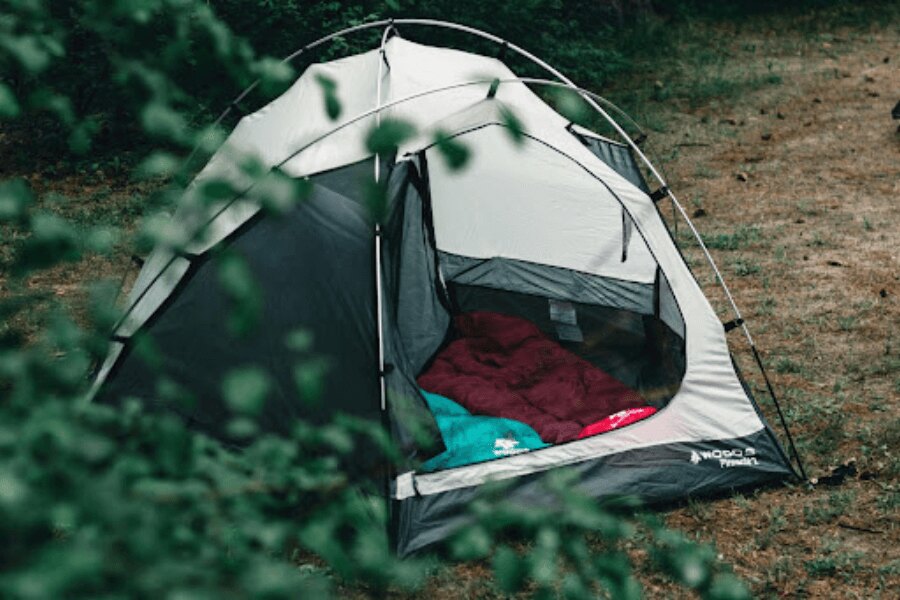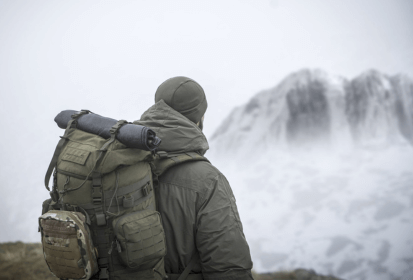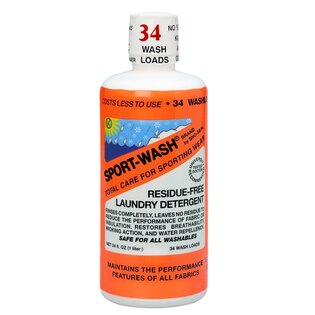How to take care of your sleeping bag properly
If you're going to spend several days in the wilderness, it's hard to do without a sleeping bag. And since it is an element that often comes into contact with the body and is transported tightly closed in a compression package, it also deserves regular care. How to treat a sleeping bag in order to preserve its functional properties for as long as possible and extend its lifespan to the maximum?
Proper storage extends the service life
- What to avoid:
The first chapter related to sleeping bag care is its storage. Although most sleeping bags are supplied in a set with a compression pack so that they take up minimal space during transport in a backpack, it is definitely not a good idea to leave the sleeping bag in the compression pack even after returning from the event.
- How to do it better:
After returning home, hang the sleeping bag on a hanger in the closet as soon as possible, or you can spread it, for example, in the storage space under the bed (provided, of course, that there is not too dusty under the bed).
If you don't have a suitable place for a sleeping bag in the closet or under the bed, a non-compressive storage bag is a great compromise. Compared to the compression bag, it takes up more space during storage, but the fibers of the sleeping bag will not be damaged by long-term compression.

In order for the sleeping bag to last a long time and retain its optimal properties, it needs to be cared for.
Transport in compression packaging
- What to avoid:
Although it may look a little neater, do not roll or fold the sleeping bag into the compression pack. Regular bends can put too much stress on the compression, which can lead to damage to the fibers of the sleeping bag.
- How to do it better:
After each use – and if possible after proper drying – stuff the sleeping bag into the packaging.
Down sleeping bags are particularly sensitive to compression
Down sleeping bags are a chapter in themselves, which in "condensed" form should be stored for the shortest possible time, ideally only for the duration of transport. A down sleeping bag insulates well, but only if there is a sufficient layer of air in the down insulation (in this case, the sleeping bag is said to have a high loft).
However, this layer tends to shrink under compression – and especially when wet – and sometimes permanently. The sleeping bag can then no longer meet the "paper" temperature limits, while improper storage naturally cannot be taken as a reason for a complaint. When choosing a down sleeping bag, it is also advisable to check the outer material, which should ideally be waterproof so that the feathers inside do not get so wet.
Avoid excessive compression
- What to avoid:
Thanks to the compression package with straps, some sleeping bags can be "compressed" into a miniature ball that takes up almost no space in the backpack. However, such a saving of space will unfortunately be reflected in the reduced insulating capacity of the sleeping bag over time. In short, you compress the insulation too much - and often irreversibly - in this way. Therefore, consider how much you need to "condense" the sleeping bag during transport. As they say – everything in moderation.
- How to do it better:
Have you arrived at the campsite? In that case, it is ideal to take apart the tent as soon as possible and also unpack, unfold and let the sleeping bag, which until then was in a compression package at the bottom of the backpack, air out. The fibers of the material from which the sleeping bag is made will not suffer as much. For the same reason, shake and "fluff" the sleeping bag every time you take it out of the package.

As soon as you arrive at the campsite, it is advisable to set up the tent and spread the sleeping bag in it as soon as possible. Thermal insulation fibers are damaged by long-term compression.
Washing and cleaning sleeping bags
- What to avoid:
Washing and cleaning sleeping bags is a chapter in itself, and if you've ever tried it, you'll surely agree that it's not a simple matter. Therefore, prevention is appropriate. In short, you should try to ensure that the sleeping bag needs to be washed and cleaned as little as possible.
Therefore, try not to roll it in the mud or place it on a dirty surface. Also, don't climb into it with your shoes on, unless it's an emergency situation where you need to warm up as quickly and as much as possible. In such moments, you need to take care of your own health more than the cleanliness of your sleeping bag.
- How to do it better:
Clean the sleeping bag locally with a damp cloth. Unfortunately, even with the best care, even the best sleeping bag will not last forever without having to wash it. Even if you don't find any visible stains on the outside, after a few nights the sleeping bag will start to smell from sweat and condensed moisture.
At that moment, it is necessary to proceed to the actual washing. In normal use - that is, if you do not go on a multi-day hike every other weekend or if you have not completed the SNP Heroes' Journey or something similar – you only need to wash the sleeping bag about once or twice a year.
Of course, you can also dare to wash your sleeping bag at home, but if you are not sure, it is better to contact a professional laundry and dry cleaner. However, find out in advance whether the company you have chosen can deal with an outdoor sleeping bag. As for washing itself, it depends on whether the sleeping bag has insulation made of synthetic materials or down. Choose a suitable detergent accordingly. For example, this one from Atsko can restore the water-repellent and breathable properties of both feather and synthetic insulation.
Wash the sleeping bag at as many degrees as indicated on its label or in the manual (mostly washing at 30 °C). Likewise, it should be stated in the same place whether the sleeping bag can be dried in a dryer. If so (and you have a dryer), you've relatively won. If not, the sleeping bag should be fluffed and shaken regularly after washing to restore its loft. This is especially important for a sleeping bag made of natural feathers, which can dry easily for several days. But definitely do not dry the sleeping bag in direct sunlight. This would speed up the drying process, but ultraviolet radiation does not benefit the sleeping bag.
And one more detail about washing: keep in mind that the sleeping bag takes on a lot of water when washed and becomes quite heavy. If you are not sure that your washing machine will handle it, it is better to leave the washing again to a professional dry cleaner.
2 helpers to protect your sleeping bag
1. sleeping bag insert
You can avoid frequent washing of your sleeping bag by protecting it both inside and out during use. The sleeping bag insert protects the sleeping bag especially from your sweat. At the same time, it serves as an extra thermal layer and is much easier to wash than the sleeping bag itself. It is not equipped with insulation in itself, so it dries much faster. Nowadays, most sleeping bag liners are made of synthetic materials, which above all means easy and quick maintenance.
You can use the sleeping bag insert separately even if you are not actually sleeping in the sleeping bag. It can be a hygienic accessory if you sleep in places where the cleanliness of the bed linen is not taken seriously. On the other hand, in some types of more luxurious accommodation (e.g. in some mountain huts in the Alps) the use of sanitary lining is even prescribed.
2. bivy bag
A bivy bag or bivouac bag serves as protection against soiling the outside of the sleeping bag. It is basically something like a one-person emergency tent, into which you "burrow" like a larva in a cocoon and protect you and your sleeping bag even in adverse climatic conditions. Compared to tents, bivy bags have the advantage that they are generally lighter and do not take up much space during transport. In addition, on warm nights, you can only use a bivy bag and leave the sleeping bag at home or simply avoid getting it dirty unnecessarily.
Readers are further interested












































































































































